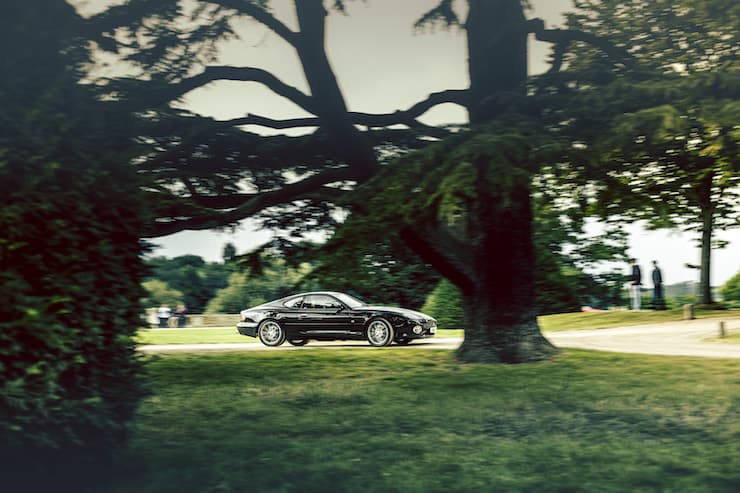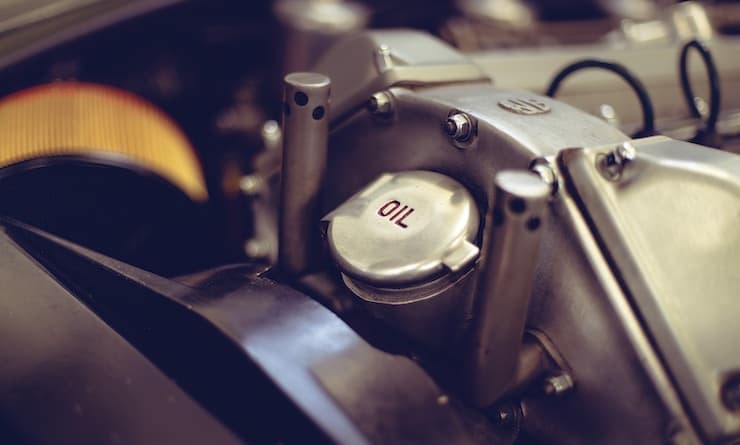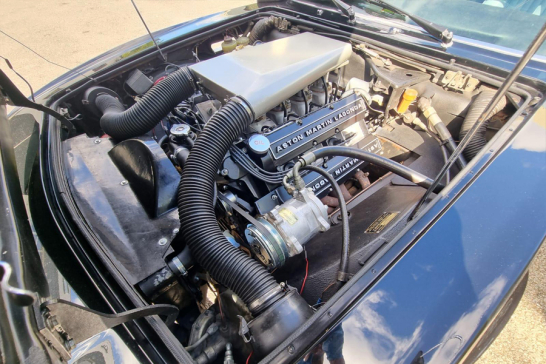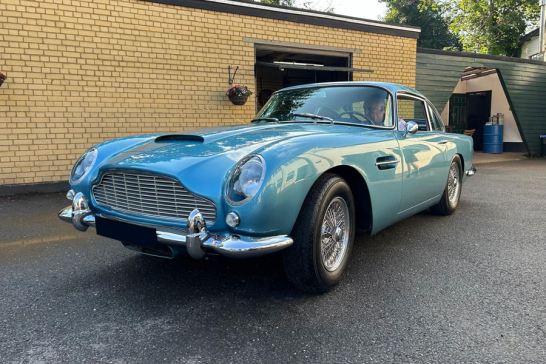Looking back from the year 2021, it can be tempting to presume that Astons Martins have always been as popular as they are today, for the very good reason that they deserve to be. As Aston Martin connoisseurs we tend to believe everyone who can afford one of these marvellous motor vehicles should go out and snap one up at the earliest possible opportunity, but our experience of working to restore, re-commission and otherwise revitalise Aston Martins of every type and condition has taught us that it’s not always that simple.
We’ve seen the demand for Aston Martins reach the level it’s at today over the past couple of decades since the year 2000, and that rising interest in the cars has been accompanied by an upward shift in the price tag. In many ways it’s a virtuous circle as far as owners of Aston Martins are concerned – the more people are interested in buying Aston Martins, the higher the price is driven, and the higher the price goes, the more people will become interested in investing. For as long as this continues, the owners of any Aston Martin will find themselves in possession of an appreciating asset as well as a rather wonderful motor car. The same applies to the work we do; the growing general interest in Astons Martins since the turn of the century has driven increasing numbers of owners to seek out our services. As you’ll see, the reasons for people seeking out our expertise and experience are varied - from restorations for auction-bought cars to dealers needing help to meet the rising demand and, in one memorable case, problems caused by an excess of rodent urine……
Collectors
To some degree Aston Martins have always been collectible, but the year 2000 was when we began to see increasing numbers of customers turning up at our workshop having purchased cars at auction which needed work - up to and including full scale restorations. The upturn in the Aston Martin market from our perspective more or less coincides with the first of what was to become an annual event – the Bonhams Aston Martin Sale in 1999. As the name suggests, this is an auction held by Bonhams auction house that focuses almost exclusively on Aston Martins, with a few Lagondas thrown in for good measure. To give a flavour of what tends to be on offer at the sale, the 2019 auction catalogue included lots ranging from a 2007 DB9 Volante, that was expected to fetch between £35,000 and £45,000, to several cars – like the 1963 DB4 Series V Convertible (one of only seven ever made) - with top estimates of three quarters of a million pounds.

From the start of the Bonhams Sale we found ourselves dealing with one particular customer who seemed to buy a car at the sale each and every year. In some years this number would increase to two or three cars. The sale, occurring around mid-May, would be followed by the car or cars in question arriving with us in late May for restoration work. Even better from our perspective – and a small sign of the wider growing trend – was the fact that a workmate of this customer also found themselves bitten by the Aston Martin bug, and so we had their cars turning up at the same time.
Rising Market
The rising market – of which the Bonhams sale was both a reflection and probably a partial cause – also meant that many Aston Martins in other auctions had been ‘touched up’, presumably to make them more appealing to the auction-going public. This process resulted in cars which were left in a less than genuinely authentic condition, to put it politely. These cars were being brought to us because the owners knew we had the expertise to carry out full restorations. They also knew that if we were allowed to work in the correct way, the finished result would be an Aston Martin which met the levels of authenticity that we’ve always prided ourselves in delivering.
All Our Own Work
At around about the same time as we found ourselves being inundated with growing numbers of cars purchased at auctions, we decided to dip our toes in the water and start buying Aston Martins on our own behalf, with a view to carrying out any work needed and preparing them for market. The reason we’d waited until then to carry out restorations on our own behalf was relatively simple – prior to this we wouldn’t have been able to afford to invest in the cars in the first place. Allied to this was the fact that we came up with a working method in which the car and the restoration would be sold as an all-in-one package; the customer would make the purchase pre-restoration because that enabled them to choose details such as the trim, the colour and any upgrades and modifications. We would then carry out the work and finally deliver a bespoke, yet completely authentic, fully restored Aston Martin.
Repairs
Another impact of the rising value of Astons was that it gave owners more confidence to spend whatever it took to repair and restore their cars, because they saw it as an investment which would pay for itself. Although we’re naturally modest, we can’t really get away from pointing out that the in-depth nature of our work and a reputation for attention to detail and superb workmanship encouraged our clients to invest more in their cars; they knew an authentic restoration would add more value to their vehicle. It wasn’t just us, of course – it’s fair to say that the standard of work being delivered on Aston Martins per se was improving, driven by customer expectations and a growing desire for authenticity.

2012 marked the next big development in our work. From this time onward, we experienced a shift to working on behalf of dealers. These dealers, having noted the rising market and the demand for expertly restored vehicles, were making a point of going out and sourcing as many pre-owned Aston Martins as they could. The experts they employed were highly skilled at finding cars that had seen better days - and had the potential to see better days again. What we offered the dealers was speed. Without sacrificing anything in terms of quality they wanted quick results, and in many cases, it meant us taking the engine out of a car so the body could undergo repainting while we worked at the mechanical restoration - and while this was being done, the trimmers would come in to work on the trimming.
Dealers were now sending us five or six cars a year that required a more or less complete restoration. The speed with which they needed the work done to get the cars to market meant we had to take a military approach to organising the workflow. In simple terms the various technicians and engineers working on individual aspects such as the trim, the mechanics and the bodywork had to work simultaneously and in synch with each other to get the job finished on time. A combination of the rising market and our own growing reputation in the industry often meant cars had been sold before the restoration work was even completed. That’s because people were driven by the desire to get their hands on an authentically restored Aston Martin; and they knew that authenticity was exactly what we would deliver.
Future Classics
One interesting feature of this period, particularly from the perspective of 2021, is the fact that the cars which are now considered classics were then only just being introduced to the market. The DB7, for example, first started rolling off the production line in 1996, and when people started bringing them to us in 2000 they were scarily modern. The scary aspect being that they were then so new that as experts in older Astons we didn’t know too much about them. The good news is that we’re quick learners, so it didn’t take us long to get up to speed on the DB7 and now – with the DB7 fully established as a classic Aston Martin - we know everything there is to know about them.
Service and Repairs
Over the years, particularly since 2000, owners have been coming to us to have work carried out after the first three or four years. Whether it’s the case or not, the perception appears to be that when or if they go to a dealer the options on offer will be to bolt some new parts on their car - or sell them a new one. Dealers are commonly set up in a way which works well for carrying out standard servicing or warranty work, but understandably, the time spent replacing some rusty bolts on an Aston Martin may not offer any commercial benefits.
In our experience, whether it’s a DB7, DB9 or a V8 Vantage (to choose just three examples), it seems owners feel happier bringing their car to us for servicing and repairs, rather than a main dealer. They know we’ll take the time to investigate and deal with any problems which aren’t so obvious and need a bit of time and attention spent on them.
The upshot of this is that as cars get older with parts continually seizing up, for example, we’re much better placed to find out what’s happening and deal with it. As our reputation has grown, more and more owners are aware of our ability to work on these vehicles. Whereas previously we might have had a few modern cars in one week and none the next, it’s more likely two or three modern Aston Martins will come in each and every day. It’s a reflection of how the service we offer has evolved to take account of the changing market – we don’t just carry out bumper to bumper restorations, we deliver on-going upkeep - and sometimes this can be as in-depth as a complete recommissioning.
Recommissioning
In simple terms a recommissioning is something like a mini-restoration. That’s not a restoration carried out on a Mini by the way, but a less comprehensive version of rebuilding a car from the ground up. Aston Martins which come to us for recommissioning have often broken down at some point and, as a result, have been standing unused for as long as 10 years. The results of this neglect might include dead starter motors, seized up carburettors and a fuel tank full of rust. We can take a car in this state and after just a couple of days have drawn up a list of jobs that need doing, following which, just a few weeks later, the owner will be happily driving off down the road. The car might not be fully restored but it is completely drivable, and for some drivers – particularly if they brought what looked like a hopeless case to us a few weeks earlier – that’s more than good enough.
So Why Did We Mention Rats?
One Vantage Volante which we worked on regularly kept coming back because the owner, although they lived in a wonderful house, had a recurring problem with rats. Clearly the rats in question were rodents of taste and discernment because, year in and year out, they established themselves within the car. One year they invaded the seals behind which the electrics run and nibbled their way through all the wiring – something which ended up being the trigger of an insurance pay out; another year they decided to set up their toilet in the middle of the engine. Anyone who knows anything about rats probably won’t need to be told that the odour of rat urine given off every time the engine heated up was extremely unpleasant; but what was even more damaging was the highly corrosive nature of rodent urine. Despite our best efforts to keep their Aston Martin on the road the owner in question eventually admitted defeat - and ended up moving to a new house!




